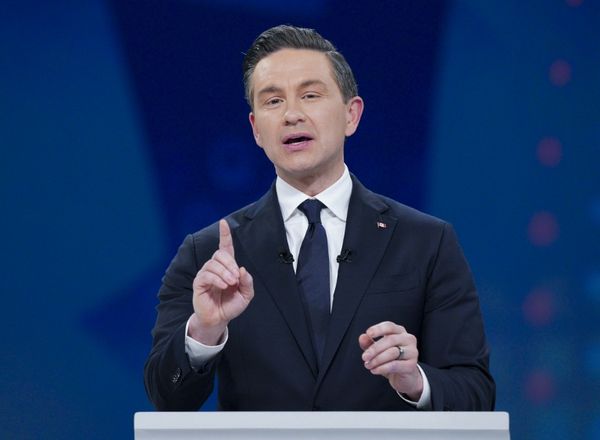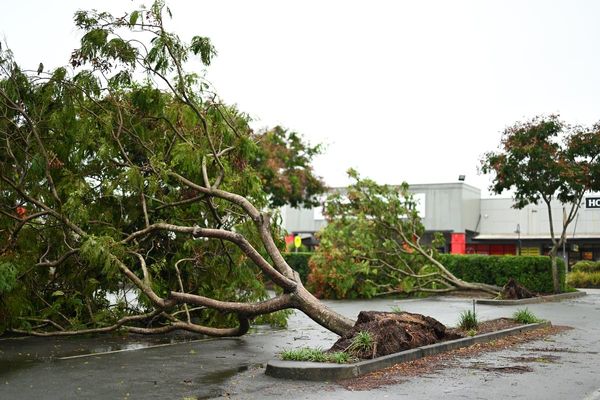
The trial of constable Zachary Rolfe has been running for the past two weeks in Darwin and is expected to run for at least another fortnight.
Rolfe is charged with murdering Indigenous man Kumanjayi Walker in the remote community of Yuendumu, about 300km from Alice Springs, in November 2019.
He has pleaded not guilty to murder and alternate charges. Here is what the court has heard during the trial.
How was Walker shot?
The court has heard Rolfe shot Walker three times at a property known as House 511 in Yuendumu at about 7.20pm on 9 November 2019. He had been trying to arrest Walker, a 19-year-old Warlpiri man, in relation to an outstanding warrant.
More evidence about the shooting was revealed when Justice John Burns amended previous suppression orders preventing the publication of body-worn camera footage of the shooting played to the court and of detailed descriptions of that footage.
Rolfe’s defence does not dispute that he shot Walker – what is in dispute is whether two of those shots were justified in the circumstances.
In his opening address, the prosecutor, Phillip Strickland SC, took the jury through body-worn camera footage of the incident. He said Rolfe and fellow constable Adam Eberl had entered House 511 looking for Walker and found him walking towards them. The officers entered via the only working door to the property, meaning Walker could not escape, Strickland said.
Strickland said Rolfe and Eberl ushered Walker to his right so his back was against the wall and the officers were in front of him. Rolfe then held his mobile phone, which had a photo of Walker on it, against the right side of Walker’s face, to confirm his identity. Soon after, he asked Walker to put his hands behind his back.
But Walker took a pair of surgical scissors from his pocket and brought them down in a stabbing motion into Rolfe’s left shoulder, the prosecutor said.
Strickland said Eberl and Walker struggled towards the other side of the room and Rolfe fired his first shot, hitting Walker in the middle of the back, while the 19-year-old was standing about a metre away.
Strickland has told the court that Walker then either fell or was wrestled to the ground by Eberl, who he described as physically larger than Walker. The pair then struggled on a mattress.
Strickland told the court Eberl gained control of Walker, who he said was lying on his front and side, with Walker’s right arm – which had been holding the scissors – pinned underneath him. David Edwardson QC, for Rolfe, disputes that Eberl was in control at this time.
The prosecution says Rolfe walked across the room to the couple, placed his left hand on Eberl’s back, and, while standing above Walker, extended his right arm, which was holding his Glock semi-automatic handgun. He pulled the trigger twice more when the barrel of the gun was so close to Walker’s body that it may have been touching it, Strickland said. According to Strickland, the second shot was fired 2.6 seconds after the first shot and 0.5 seconds before the third.
What the prosecution argue – and what Rolfe’s defence will be
Rolfe is charged in relation to the second and third shots. Edwardson said Rolfe would defend his actions as being reasonable and justifiable in the context of the danger faced by him and Eberl. He said Rolfe was acting in self-defence and to defend the life of Eberl when he fired the second and third shots – and his actions were supported by his training. The barrister cautioned the jury against placing too much weight on the footage – especially when being shown it multiple times.
Edwardson argued Walker had a propensity for violence, having threatened different officers with an axe days earlier, and had attacked Rolfe in a dark and confined space. Rolfe “did not have the luxury of considering tactical options frame by frame”, Edwardson told the court. “He could not press the pause button.”
Strickland says the prosecution case was not confined to Rolfe’s actions during the shooting but the context in which it took place.
What was the plan?
The trial has heard evidence about what information was provided to Rolfe and his four colleagues from Alice Springs before they travelled to Yuendumu on 9 November 2019. The prosecution argues that evidence – and what the officers knew before they left Yuendumu police station – is essential for establishing the shooting’s context. They argue that the attempt to arrest Walker on the night he was shot was inconsistent with a plan to arrest him the following day.
Sgt Julie Frost, the officer in charge of Yuendumu station, gave evidence that an email described as the operational plan was sent to four of the officers and other police about two hours before they arrived in Yuendumu.
But the officers were already on their way from Alice Springs and would not have had mobile phone reception to check their emails for most of the journey, the court heard.
Frost says she anticipated this and printed out copies for the officers, which she made available at the station when they arrived. She says she gave the officers a briefing about the contents of the plan, which included details of their duties that night, and mentioned the officers would meet back at the station at 5am the following day to prepare for Walker’s arrest.
Two of the Alice Springs-based officers who were in the five-minute briefing and have given evidence, however, recall few details of the briefing and have denied seeing the plan prepared by Frost. Another officer, the dog handler Adam Donaldson, who arrived before the four officers from the Immediate Response Team (IRT) which included Rolfe, said he was given a copy of the plan by Frost.
Frost told the court there was no intelligence on where Walker was, as he had not been seen by police since he threatened two local officers with an axe on 6 November. She had told his family and community elders that he should hand himself in, and given him until after a funeral to be held in the community on 9 November to do so, but did not believe he would surrender.
She said she had told the officers they should gather intelligence on where Walker was while they were patrolling the community on the night of 9 November and that if they came across him that night they should arrest him.
Edwardson says the plan, even if it had have been seen by the officers, contained multiple flaws, including that it mentioned their deployment was not expected until 11pm (about four hours after they were actually ready to deploy) and that there was no intelligence about Walker’s location, meaning he could not be arrested the following morning as police did not know where he was. He has also sought to emphasise that in policing all plans need to be fluid to respond to changing circumstances.
Regardless of what the officers knew before leaving the Yuendumu station, one thing is not in dispute: 15 minutes later Walker was shot.
The relevance of police training
The prosecution alleges Rolfe acted against his training by drawing his gun while clearing a house during an earlier search for Walker; by allegedly failing to issue verbal commands during his confrontation with Walker; in how he used his weapon during this confrontation, and, along with the other officers involved, by not using cordon and contain techniques once they learned where Walker could be on the night of the shooting.
Eberl, the prosecution alleges, was gaining “ground control” of Walker, as he had been trained to do, when Rolfe fired the second and third shots. As a member of the IRT, Rolfe had received more weapons and tactical training than general duties officers.
The defence also considers police training to be important in the case, for different reasons.
“He made a split-second decision to fire shots two and three, as we suggest, consistent with his training, he was required to do,” Edwardson said on the second day of the trial.
Most police witnesses, of which there have been more than a dozen, have been asked by Edwardson about whether they were familiar with the phrase “edged weapon equals gun”, meaning police can draw their firearms once someone presents an edged weapon. They have also been asked about training in relation to the safe distance they should try to maintain from a subject with an edged weapon. Edwardson has also asked about training in relation to where officers are told to shoot offenders – at the central body mass.
Walker’s final days
The court has heard evidence about Walker’s final days in Yuendumu, including from several family members who say he told them he planned to surrender.
Eddie Robertson, the grandfather of Walker’s partner, Rickisha Robertson, and a respected local elder, said he told Walker after the axe incident on 6 November that he had to surrender. Walker, who the court has heard was quietly spoken, nodded in response, Robertson said at the trial.
Louanna Williams, Walker’s aunt, said he also visited her after the axe incident and told her he planned to hand himself in after the funeral of a family member. She said Walker also told her he was “comfortable” having her brother, senior Aboriginal community police officer Derek Williams – who was not involved in the events around Walker’s death – arrest him and that he denied any involvement in a series of break-ins in Yuendumu.
Local police suspected Walker had been involved in the break-ins which had prompted medical staff to leave the town. The break-ins and evacuation were both among the reasons used to justify the deployment of Rolfe and other officers from Alice Springs.
The funeral was for the uncle of Leanne Oldfield, Walker’s adopted mother. Oldfield told the court that minutes before the shooting, she had been sitting outside House 511.
She said Walker had been looking at a family photo of his cousins and an aunt in a swimming pool and laughing, she said, before he went inside the property.
“Soon as he went inside, I seen the police coming through the gate,” Oldfield told the court.







